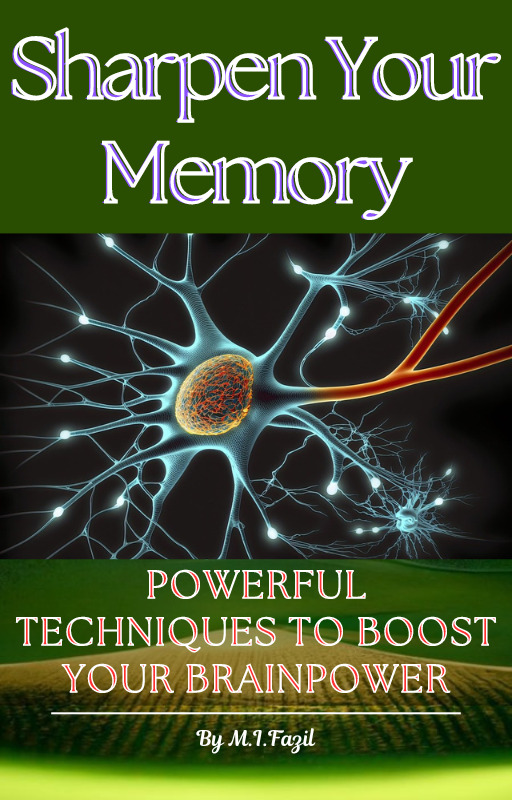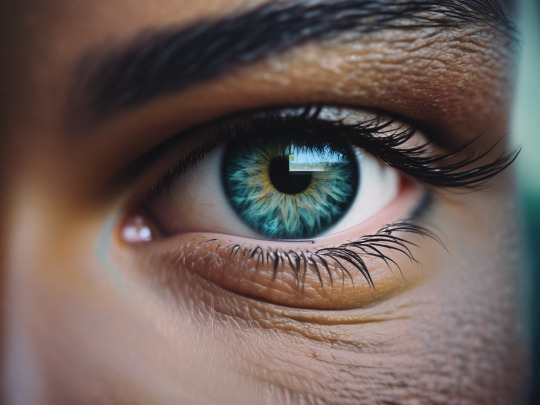#Memory Retention
Explore tagged Tumblr posts
Text


Early Childhood - Sandpaper Letters
Sandpaper letters are a fundamental tool in our classrooms, offering tactile and visual experiences that enhance early literacy skills. When students trace the textured letters with their fingers, they engage their sense of touch, which helps reinforce the shape and form of each letter. This multisensory approach supports memory retention and fine motor skills development. Additionally, drawing the letters in the Sand Tray aids in the development of reading, writing, and learning to copy, further solidifying their understanding of letter formation and phonetics.
#tactile#visual#literacy#multisensory#memory retention#fine motor skills#hands on learning#purposeful activity#phonetics#order#concentration#coordination#independencetma#montessori#private school#arlingtontx#arlington#texas#infant#nido#toddler#early childhood#preschool#kindergarten#elementary#education#private education#nontraditional#the montessori academy of arlington
11 notes
·
View notes
Text
I started doing the Sumerian way of finger counting–using your thumb to count the individual knuckles on the rest of your fingers for a Base Twelve instead of Base Ten on just the whole fingers–bc I'm extra like that, but I swear it's helping my dyscalculic ass remember numbers better. If I take a medicine at 3:47 and can't take another dose for seven hours, knuckle counting to 10:47 helps me remember when to take the next dose better than when I was was doing it by finger counting.
Anyway, neat
#memory retention#math#counting#finger counting#yeah I'm thirty one and still finger count what of it#dyscalculia
14 notes
·
View notes
Text

‘Memories r stinky’
A short comic by me based on a conversation I had with a friend about trying to remember our childhood or even things from a week ago. I made it in Like 10 minutes so thats why it’s kinda scribbly
But I also just like my art scribbly
#trauma#did system#did osdd#did community#mental health#mental illness#mentalheathawareness#memory#memory retention#memory repression#comic art#original comic#comics#mini comic#web comic#my comic#copperkudzueye#digital art#artists on tumblr#art
49 notes
·
View notes
Text
In psychology, this is known as the Dunning-Kruger effect.
Poor students lack insight into their own limitations – as they would have to know about the vast amount of knowledge out there to be able to see how little they know in comparison. That means that those who are not very good at something tend to be overly confident, while those who have made an effort tend to underestimate their abilities. Poor students also have no trouble finding a question to write about: they neither lack opinions nor the confidence that they have already thought them through. They also won’t have trouble finding confirming evidence in the literature as they usually lack both interest and skill to detect and think through disconfirming facts and arguments.
- How to Take Smart Notes (Sönke Ahrens)
#General Knowledge and Learning#Knowledge Management#Note-Taking Strategies#Learning Techniques#Cognitive Science#Self-Improvement#Effective Study Methods#Knowledge Retention#Deep Learning#Conceptual Understanding#Critical Thinking#Smart Notes and Writing#Smart Notes System#Zettelkasten Method#Note Organization#Linking Notes#Writing Workflow#Idea Generation#Writing Productivity#Academic Writing#Literature Review#Personal Knowledge Base#Psychology of Learning#Memory Retention#Spaced Repetition#Metacognition#Cognitive Bias#Intrinsic Motivation#Curiosity-Driven Learning#Growth Mindset
4 notes
·
View notes
Text
My brain likes to hold on to the most inane and random things. Every time I hear/see/say/think the phrase "years of practice," my brain plays a clip from Danny Phantom of Vlad (the evil dude with all of Danny's powers) saying that.
Meanwhile, I struggle to remember my SSN
movies where someone hears an important message only once and retains all the details….
girl if that were me, we’d be fucked. I have to reread emails like 4 times.
171K notes
·
View notes
Text
#father#fathersday2025#memory retention#caringforseniors#father figure#memory loss#dementia#alzheimers#age regression caregiver
0 notes
Text
Multitasking May Harm Your Brain: What Science Says And How To Stay Sharp - News18
Last Updated:May 10, 2025, 17:06 IST Studies suggest that multitasking may lead to decreased attention span, reduced memory retention, and diminished overall productivity. The human brain is not designed to perform multiple attention-demanding tasks at once. In today’s fast-paced digital era, multitasking is often viewed as a valuable skill. You might feel productive while juggling various…

View On WordPress
#attention span#brain health#cognitive function#health and fitness#lifestyle#memory retention#mindfulness#multitasking#physical activity#productivity#wellness
0 notes
Text
Richard James Rogers, award-winning author and pedagogical expert, describes the process of interleaving. Rogers is the first person ever to describe generalisable rules for applying interleaving in the secondary classroom.

View On WordPress
#active learning#classroom techniques#cognitive load theory#cognitive science#education#Effective Teaching#evidence-based teaching#formative assessment#instructional design#interleaving#learning science#long-term memory#memory retention#pedagogy#retrieval practice#richard james rogers#Richard James Rogers award-winning author#Richard James Rogers bestselling author#Secondary Education#spaced practice#student learning#teacher professional development#teaching#teaching strategies#The Quick Guide to Classroom Management#The Quick Guide to Classroom Management: 45 Secrets That All High School Teachers Need to Know
0 notes
Text
Innovative Methods for Memory Retention: Boost Recall
"Ready to remember everything? 🧠✨ Unlock your brain's potential with these innovative memory retention techniques! Say goodbye to forgetfulness and hello to amazing recall! 😂🔍 #MemoryRetention #BoostRecall #InnovativeMethods #BrainTraining #Cognitive
In our fast world, finding new ways to keep memories is key. I value memory a lot, for both personal and work life. Improving memory helps us learn better and remember more. Studies show that different ways to think can help us remember better. This makes it easier to learn new things every day. Recent studies link too much sugar to smaller brains and bad memory. Also, being overweight or…
#Boost Recall#Brain Training#Cognitive Health#Cognitive Methods#Innovative Techniques#Learning Strategies#Memory Enhancement#Memory Improvement#Memory Retention#Mental Performance
0 notes
Text
Color Psychology and the Impact on Learning Outcomes
Color psychology — the study of how color affects mood, emotions, and memory — has the potential to improve learning outcomes. Humanities students who studied color-coded course content remembered more of what they’d read as a result, a study published in Heliyon reveals. Red was the most effective color as it aided memory retention for 57% of students, whereas black was least effective (it helped only 20% of students). As humans are visual creatures, color impacts the way information is absorbed and retained. So, if you want to make your online courses as engaging, valuable, and effective as possible for students, customers, or employees, color psychology principles can do just that.
The science behind color psychology
Although the reasons behind why color influences mood, memory, and learning outcomes are varied, it largely comes down to the fact that sight is our strongest sense. “90% of information transmitted to the brain is visual”, MIT Sloan reveals. That means color has a huge impact on the brain’s visual neurons. When you see colors, different parts of the visual cortex light up in response to help you recognize and associate each individual color. So, as your brain is basically wired to remember colors, that’s ultimately why it's easier to remember information when it’s accompanied by color, far more so than it is to remember black and white text or spoken information.
Blue aids relaxation and focus
Colors like blue and green (peaceful shades found in nature) can reduce stress and anxiety and put you in a relaxed, focused state that’s conducive to learning. Blue, in particular, has been proven to improve performance in creative tasks, a study published by the American Association for the Advancement of Science (AAAS) reveals. This is likely because you often need to be in a calm and relaxed “flow state” in order to excel creatively — and blue can help get you there. Research from Lund University also echoes this research as blue was found to relieve stress and improve focus. Consequently, blue can help people perform tasks quickly and with greater accuracy.
Red stimulates cognitive function
Warm colors like red, yellow, and orange can boost alertness and cognitive function, which, in turn, aids memory retention. In fact, the AAAS research also found that red specifically improves how people perform on detail-oriented tasks. However, as red is such a bold color, it shouldn’t be used too much. The research also found that heavy usage of red overstimulates learners and causes them to get distracted.
Well-designed courses aid employee satisfaction and retention
When you consider that learning development is vital to employee satisfaction and retention, it’s all the more important to design your course well. Your ultimate aim is to help employees learn efficiently, so they can progress in their position with you. In fact, 48% of American workers would happily switch jobs if the new one offered skills development opportunities, which highlights the potential of upskilling to attract and retain employees. “If your employees feel that they’re growing and developing skills [that] suit their strengths and their career goals, they are going to be more satisfied and more likely to stay in their roles”, Amplify HR founder Karen Kirton explains.
Use color and contrast to increase focus
Fortunately, strategic use of color can engage employees and make your course more effective. So, for example, to use color to stimulate focus, highlight key parts of the text with different background colors to emphasize important points. This adds variety that breaks up the content and makes it easier for students to take in the most useful information. Be careful not to overdo it, though. Use color sparingly to prevent the course looking cluttered, otherwise it’ll confuse students and hamper productivity.
Also, consider how you use contrast: the difference between two color hues. Past research shows that when colors contrast, the eye is naturally drawn to them. So, choose a background color that opposes and contrasts nicely with the text to increase readability and retention.
Strategic color use is key if you want to create engaging and effective courses. As long as you follow color psychology principles, you’ll help students and employees better absorb and remember your content, so they achieve better learning outcomes.
Share in the comments below: Questions go here
#color psychology#visual creatures#learning outcomes#stress and anxiety#flow state#cognitive function#boost alertness#aids memory#memory retention#aids learning#employee satisfaction
0 notes
Text
Sharpen Your Memory | Powerful Techniques to Boost Your Brainpower |

Is your memory starting to feel foggy? Are you tired of forgetting names, appointments, or important details? It's time to unlock your brain's full potential!
"Sharpen Your Memory" provides you with a comprehensive toolkit to enhance your cognitive abilities and improve your memory. Discover proven strategies, practical exercises, and mind-boosting techniques that will help you:
• Retrain your brain: Learn how to create new neural pathways for optimal memory function.
• Master memory techniques: Explore effective methods like mnemonics, visualization, and association.
• Boost brainpower: Discover tips for improving focus, concentration, and overall cognitive health.
• Enhance your life: Experience the benefits of a sharper memory in your personal and professional life.
Don't let a fading memory hold you back. Take control of your cognitive abilities and unlock your true potential.
Whether you're a student, professional, or simply looking to maintain a sharp mind, this book offers the tools and knowledge you need to achieve optimal brainpower.
#memory improvement#brain power#enhance cognitive function#improve memory#brain health#mental clarity#brain training#cognitive enhancement#memory retention#mental health#boost memory#memory enhancement#memory
0 notes
Text
Maintaining cognitive health is vital for individuals receiving home care in Secane, Pennsylvania. A crucial aspect often overlooked is the impact of diet on brain function. The foods we consume significantly affect memory retention and cognitive abilities. By incorporating brain-boosting foods into daily meals, caregivers in Pennsylvania can support their loved one’s mental well-being and overall quality of life.
0 notes
Text
The Mandela Effect: A Fascinating Psychological Phenomenon

View On WordPress
#cognitive psychology#collective memory#confabulation#eyewitness testimony#false memories#Fiona Broome#historical records#human brain#human memory#Mandela Effect#memory formation#memory malleability#memory reconstruction#memory retention#Nelson Mandela#neuroscience#parallel universes#psychological phenomenon#psychology#social reinforcement
0 notes
Text
The role of preschool education in shaping young minds is paramount. One innovative approach gaining significant traction is bilingual education. Research indicates that bilingual classes not only contribute to linguistic proficiency but also play a crucial role in enhancing cognitive development among preschoolers.
0 notes
Text

Black spot
#artists on tumblr#artist#art#arte#creepypasta#creepypasta art is keeping me going#creepypasta art#jeff woods#jeffery woods#jeff the killer#jtk fanart#jtk#creepypasta jtk#brain#love being a biologist#who knows anatomy#temporal lobe is part of memory and retention#iykyk#doodle
58 notes
·
View notes
Text
Attrition, Retention Chapter 11: Family Reunion
(AO3 link)
Ingo meets Drayden. Meanwhile, the gym leaders plan their next move.
#submas#mywriting#have a new chapter on this memorial day :)#it's Ingo's turn to go through it#attrition retention au
22 notes
·
View notes